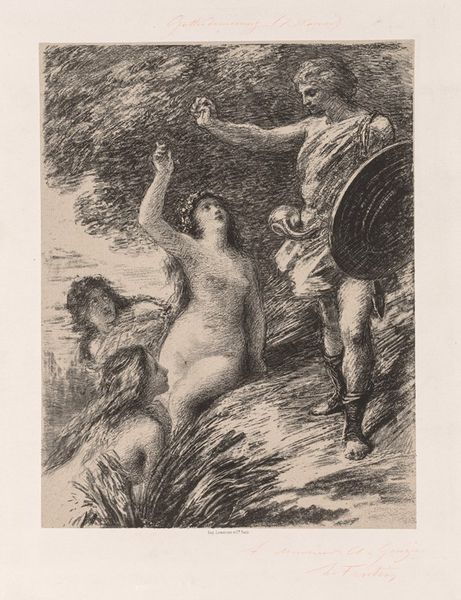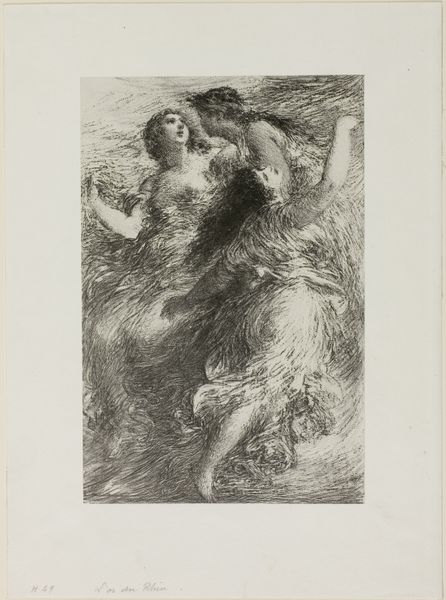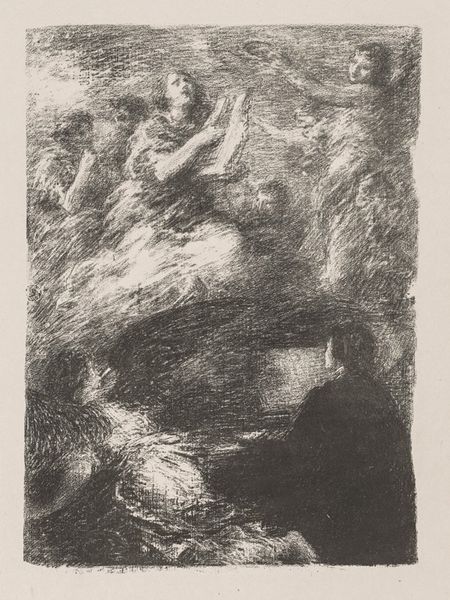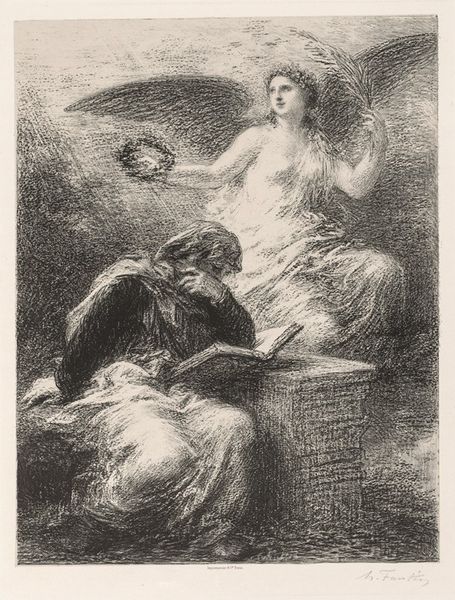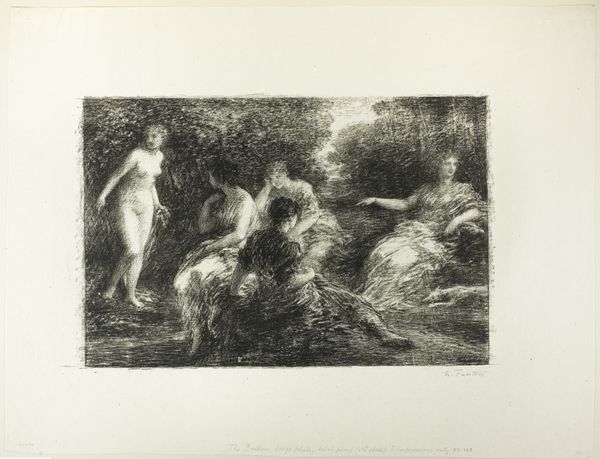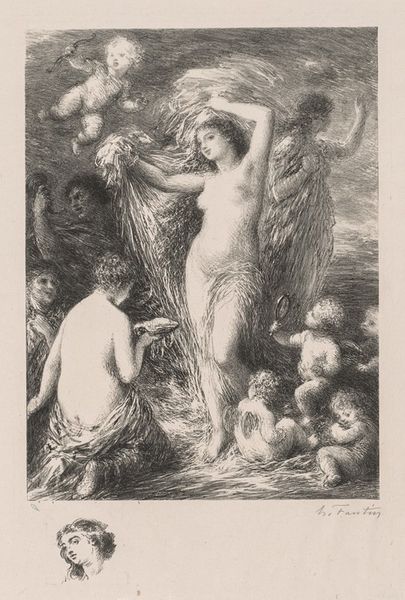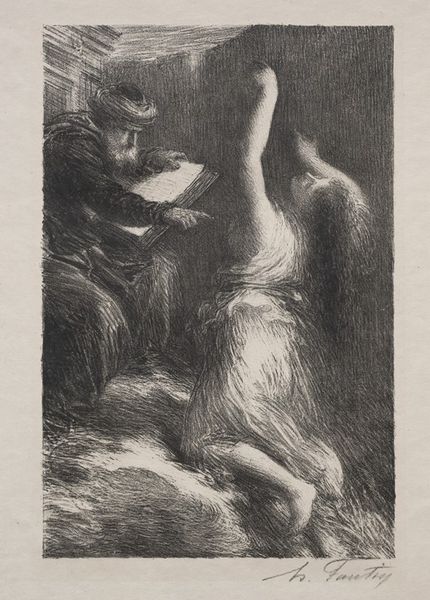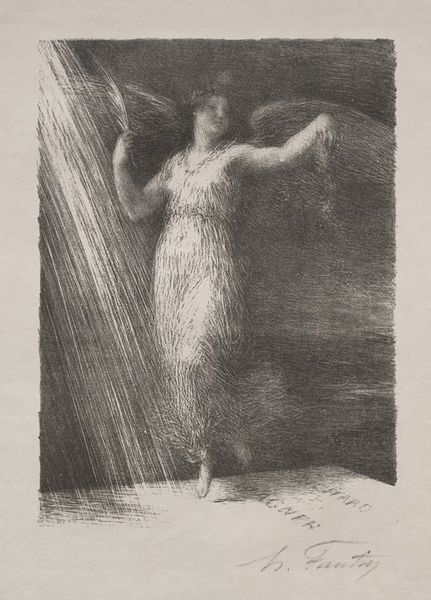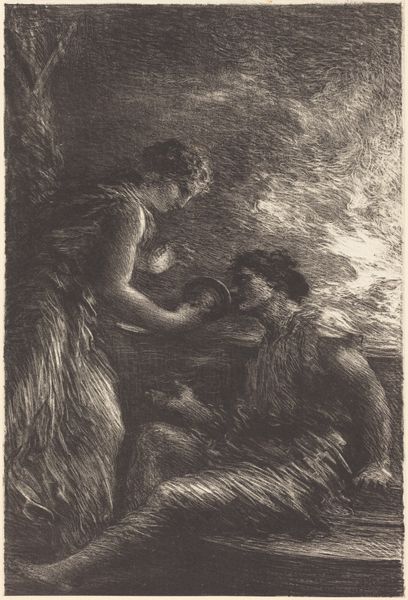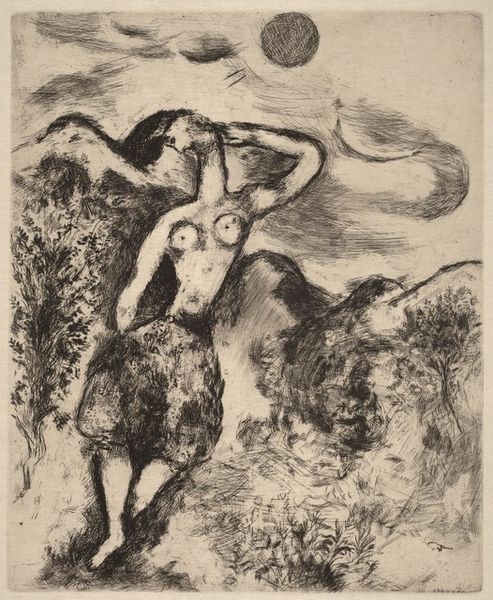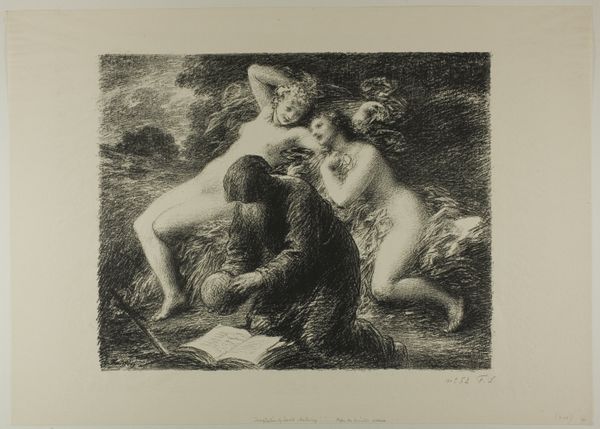
drawing, graphite, pastel
#
drawing
#
landscape
#
charcoal drawing
#
figuration
#
pencil drawing
#
symbolism
#
graphite
#
pastel
#
nude
Copyright: Public Domain: Artvee
Henri Fantin-Latour made this lithograph, Dancing, in 1895, using a stone matrix and greasy crayon. The lithographic process, a relatively recent invention, allowed for the efficient reproduction of an image. But the results were always dependent on the hand of the artist, and the skill of the printer. Look closely, and you can see the granular texture created by the crayon on the stone. It is a fundamentally reproductive medium – think of posters and magazines – but Fantin-Latour uses it to achieve atmospheric effects, a hazy vision of nymphs at play. In his hands, lithography became more than just a means of mass production. The image evokes an immersive world of dance and music, drawing on the history of Romantic art. By emphasizing the tactile qualities of the medium, he invites us to consider the relationship between mechanical processes and artistic vision, challenging traditional boundaries between fine art and industrial production.
Comments
No comments
Be the first to comment and join the conversation on the ultimate creative platform.
